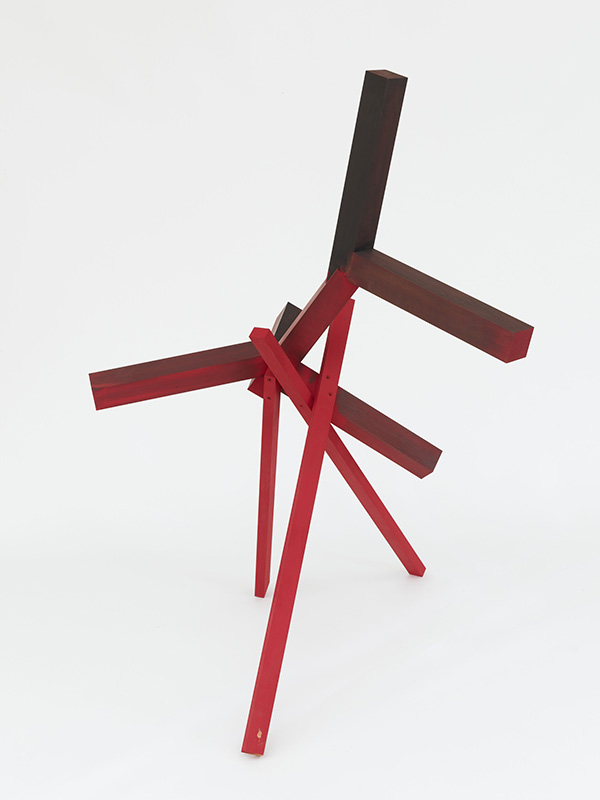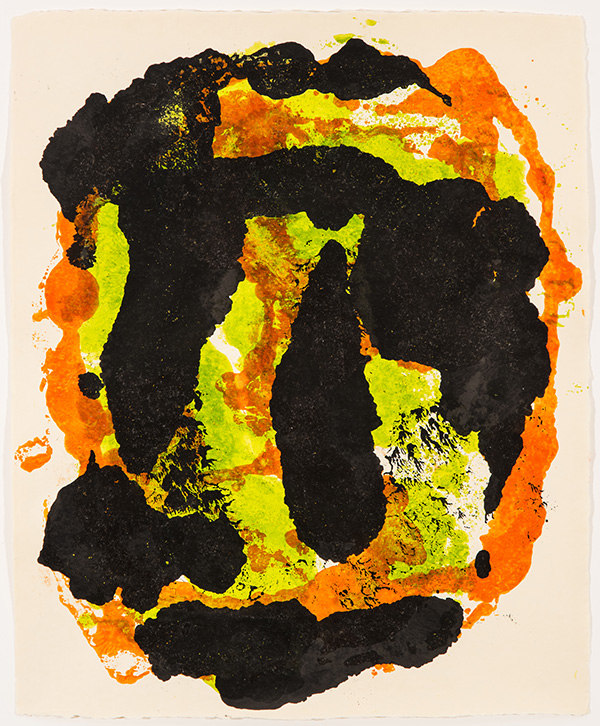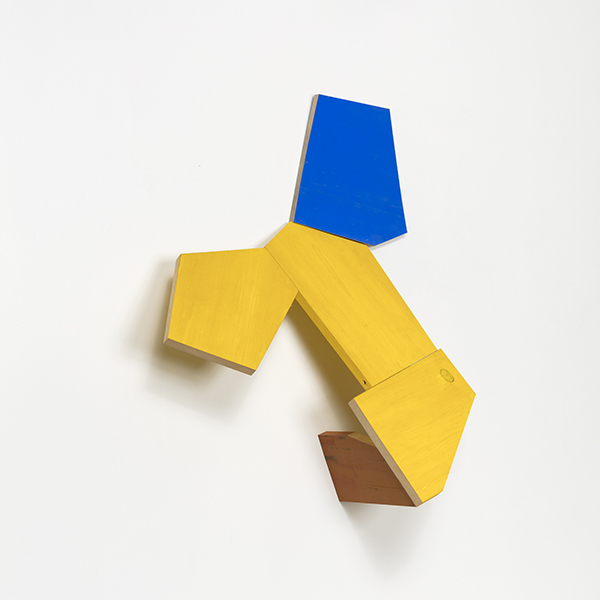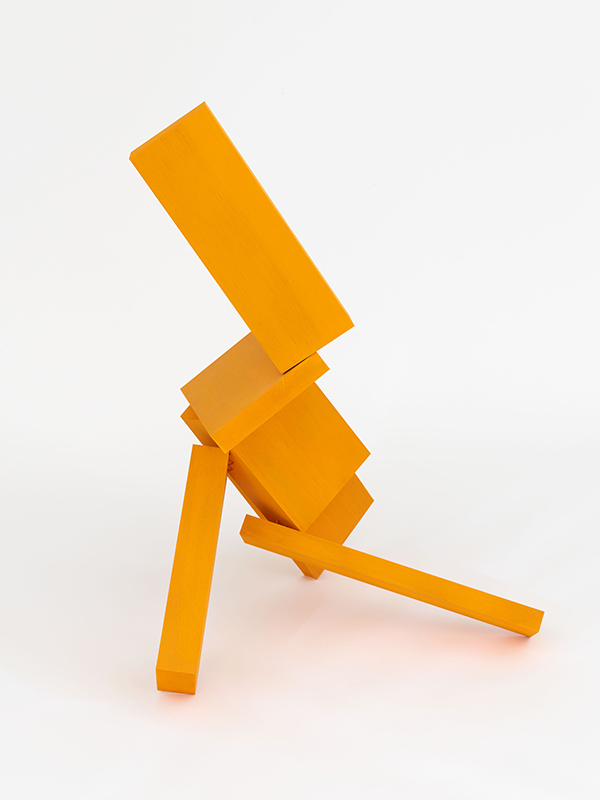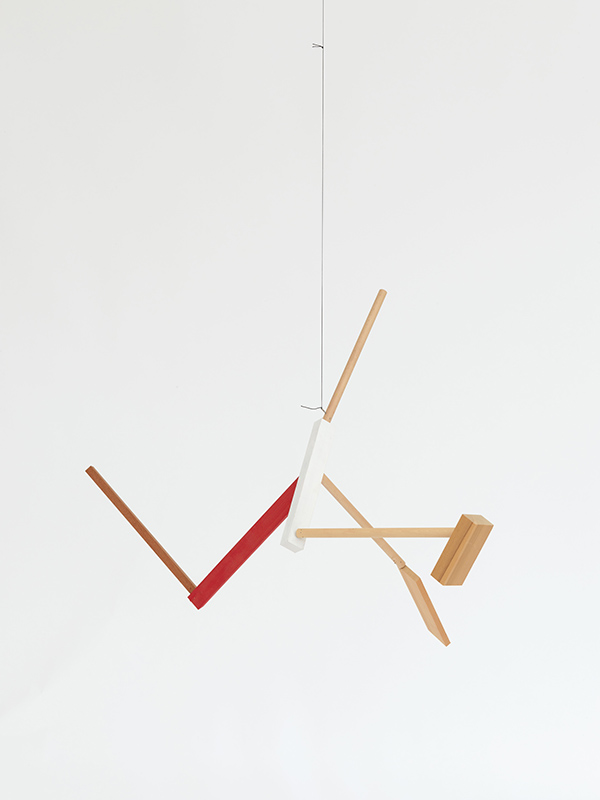ART CITIES:Paris-Joel Shapiro
 Born in 1941, Joel Shapiro is a famous Minimalist artist renowned for his frequently anthropomorphic monumental bronze sculptures, he endlessly probes the possibilities of line and form in space. The question of balance is always present in his work, playing on the mass, density and properties of materials. His work shows the powerful influence of the Russian constructivists, whose heritage he embraces and transgresses in equal measure.
Born in 1941, Joel Shapiro is a famous Minimalist artist renowned for his frequently anthropomorphic monumental bronze sculptures, he endlessly probes the possibilities of line and form in space. The question of balance is always present in his work, playing on the mass, density and properties of materials. His work shows the powerful influence of the Russian constructivists, whose heritage he embraces and transgresses in equal measure.
By Efi Michalarou
Photo: Galerie Karsten Greve Archive
Joel Shapiro for the occasion of his solo exhibition “Splay” at Galerie Karsten Greve, created a range of works especially for the show. Joel Shapiro was born in New York City, and received B.A. and M.A. degrees from New York University. The son of scientists (his father was an internist and his mother a microbiologist) who were also interested in art, Shapiro took art classes as a child, considering it “fun” but not a potential career. He attended college, graduating with a liberal arts degree, with the intention of becoming a physician. However, after graduation he spent two years in the Peace Corps in India, and it was there that he decided to become an artist. Returning to New York, Shapiro rented a studio and registered for graduate work at New York University. He soon won critical acclaim for his small-scale works that had an implied human presence, such as sculptures of houses and chairs. Since the mid-1970s, the human figure has become the most significant theme in Shapiro’s sculpture. More recently, Shapiro has begun to make human-size sculptures. He does not add anything extraneous to the basic figure, making sculptures that are devoid of “individuating” detail, sexual identity, narrative or identifying context. Through the human figure, Shapiro investigates the very nature of abstraction. In 1980 Shapiro made his first nearly lifesize sculpture of the human figure by joining lengths of wooden four-by-fours: a “head”, two “arms” and two “legs” to a slightly wider timber rectangle, the “torso”. A year later Shapiro cast the work in bronze, a material with a long tradition in the history of Western sculpture but by the 1980s discredited in some eyes as old-fashioned. Thus began Shapiro’s mature work and a series of figures that refer to the human body (though they do not necessarily include all the body’s parts) and that assert themselves vertically in space, usually at the same scale as the human body. Shapiro’s usual working method, is first to create a small wooden model by joining lengths that are square or rectangular in section with hot glue and a pin gun. There are no preparatory sketches; the model is adjusted by trial and error. The model is then constructed at full scale from chunks of sawn wood joined to one another. Next the wood lengths are sand-cast in bronze at a foundry, so that traces of the saw marks against the wood grain, remain visible on the exterior surface of the finished bronze. The molds created to cast the bronze have a core built inside them, so that the bronze parts are hollow and only three-eighths of an inch thick. These parts, sometimes reinforced internally by stainless steel, are then bolted, or more rarely welded, together to form the nearly finished sculpture. The parts join at different angles. In sculptures from the early and mid-1980s most of the ends of the lengths were finished at forty-five or ninety-degree angles and joined flat on flat. In more recent works some of the ends are cut at more complex and acute angles, so that when the parts are joined the extent of artifice in Shapiro’s many cantilevers is emphasized. Once the work is constructed, Shapiro chases the surface to bring out the original pattern of the wood grain and to reduce, yet not erase, traces of the casting process. Sometimes he then applies a light patina or covers the entire surface of the work with primer and a coat of vividly colored oil paint. Over the past decade Shapiro has received a number of commissions to make works for permanent installation in public spaces, including an open area in front of the western facade of the United States Holocaust Memorial Museum in Washington, D.C., and a major plaza in the city of Orléans, France.
Info: Galerie Karsten Greve, 5, rue Debelleyme, Paris, Duration: 18/10-15/12/18, Days & Hours: Tue-Sat 10:00-19:00, https://galerie-karsten-greve.com
